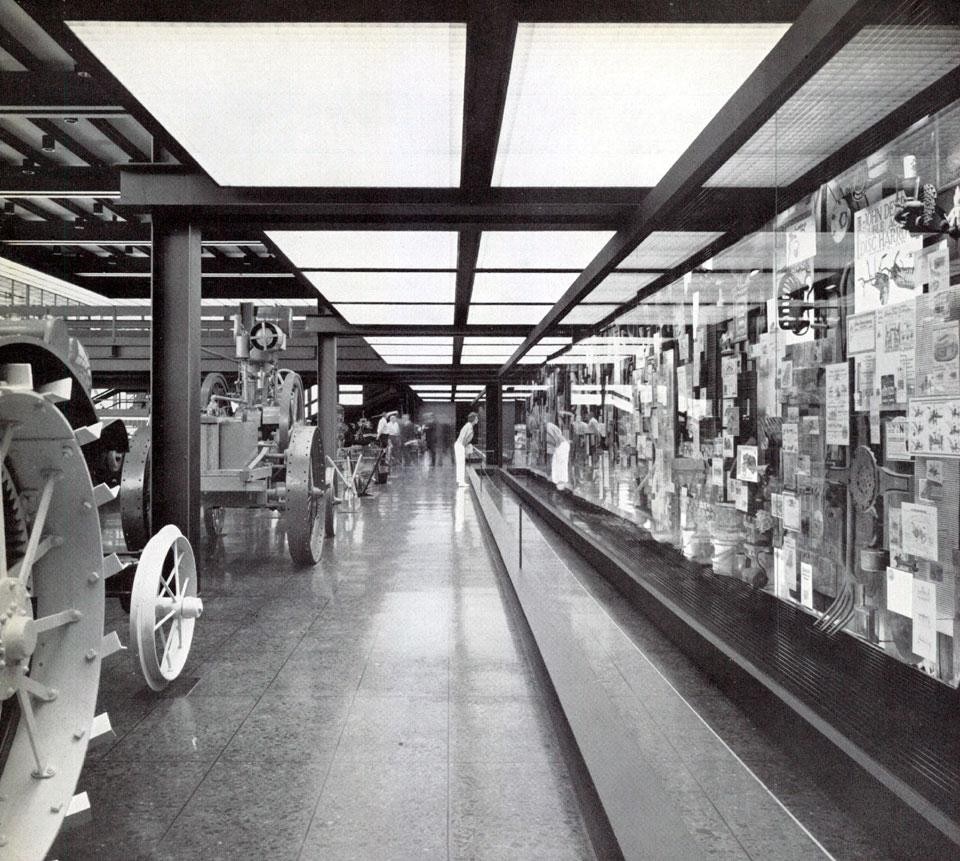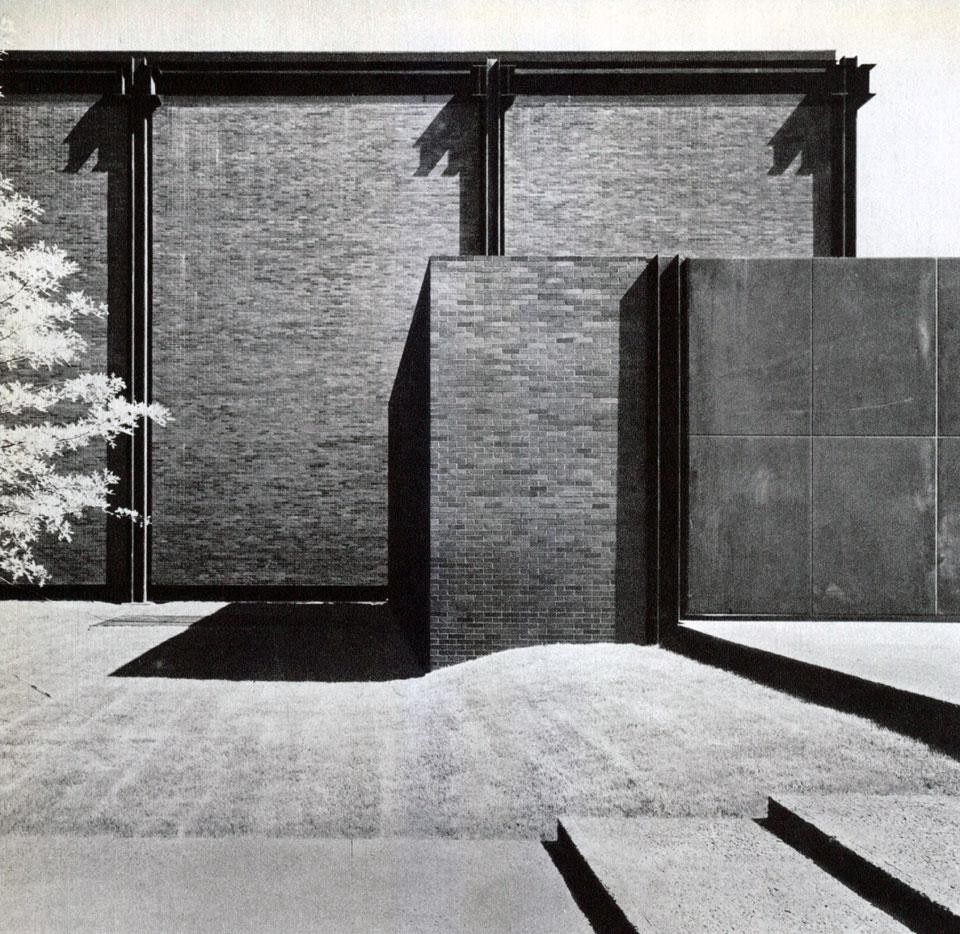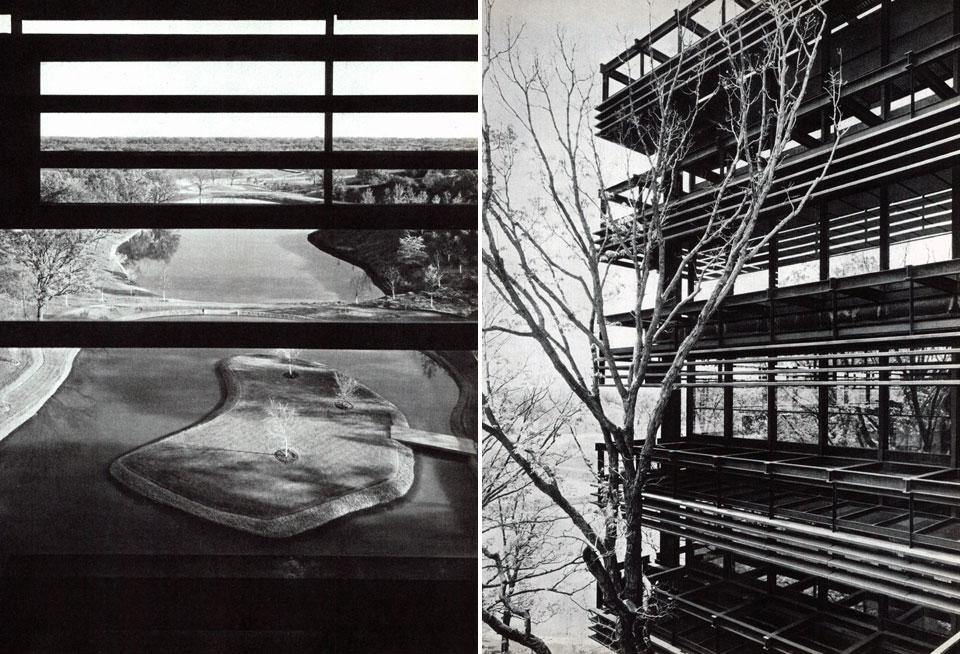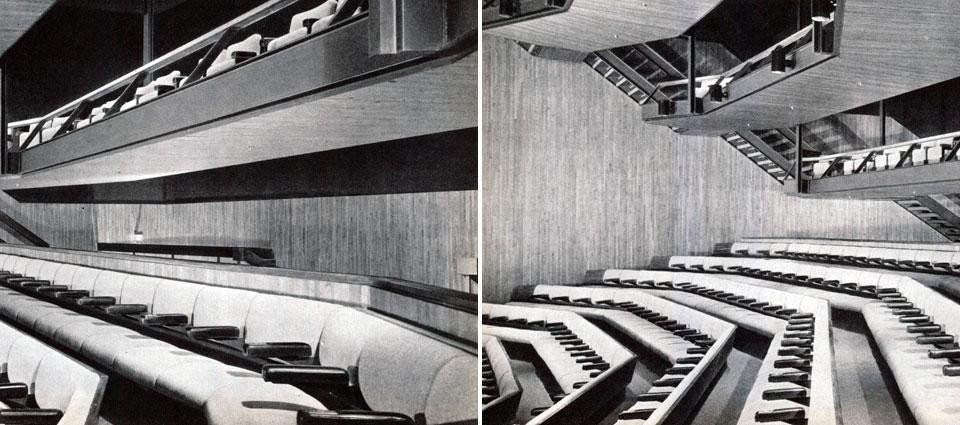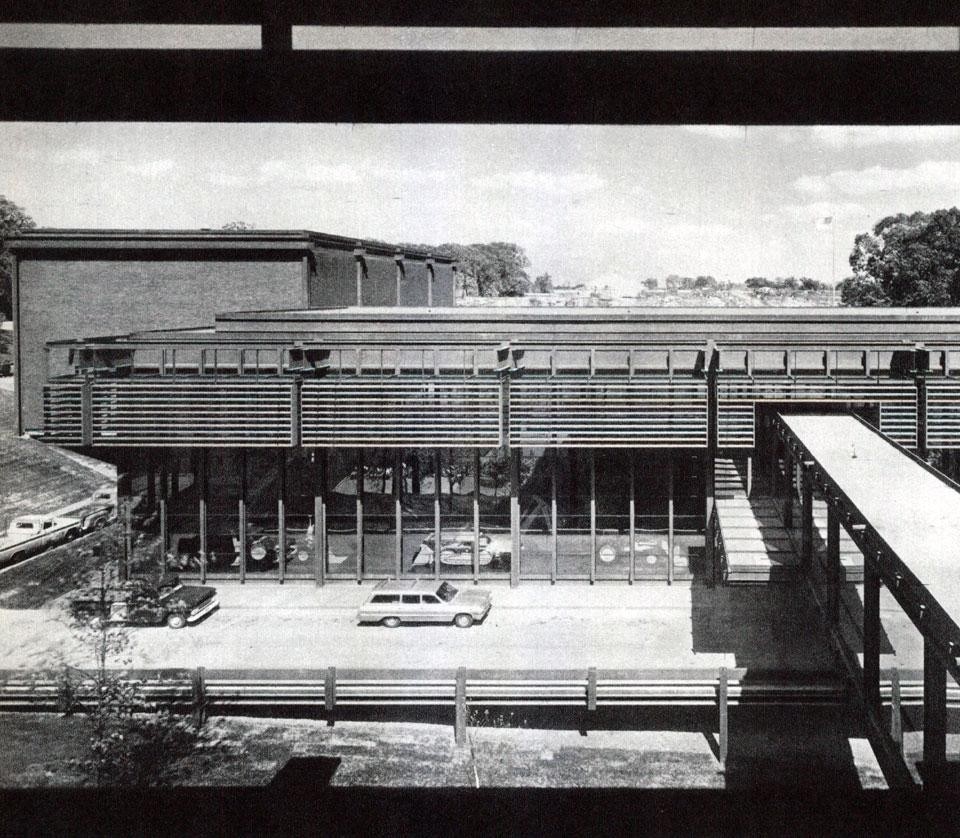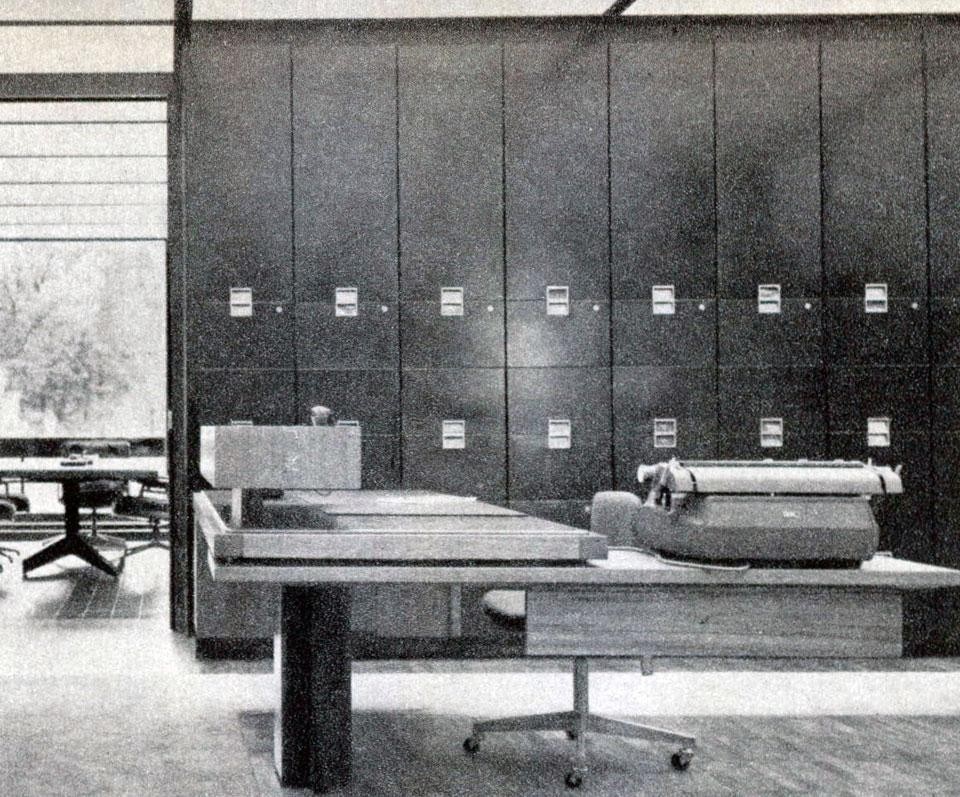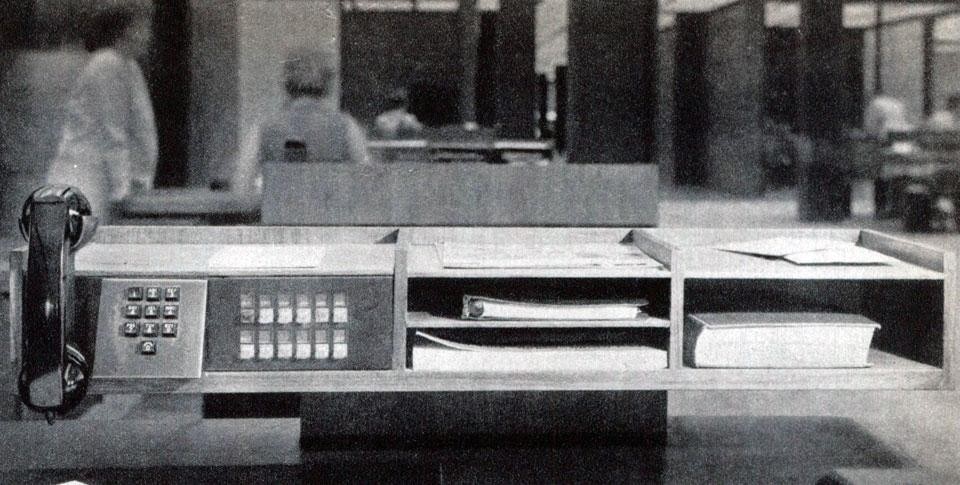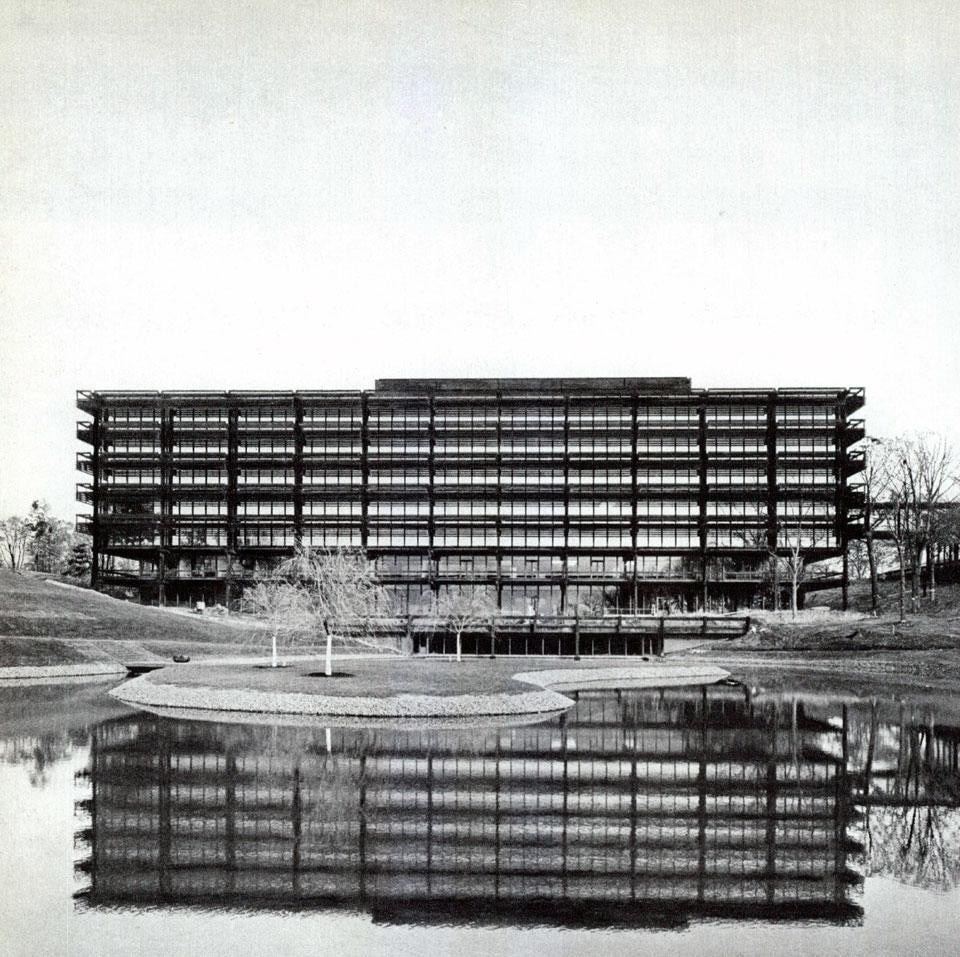This article was originally published in Domus 422 / January 1965
A steel building by Saarinen, open recently
"The architectural character was determined largely by the site and the character of the company. The 600 acre site consists both of high table land and low river land, its edges broken by wooden ravines. One of the broad ravines seemed the finest, most pleasant and most human site for the building complex. In such a treestudded site, where it would be intimately connected with nature, a strong, dark building seemed appropriate. ...Having decided to use steel we wanted to make a steel building that was really a steel building (most so-called steel buildings seem to me to be more glass buildings than steel buildings, really not one thing or the other).

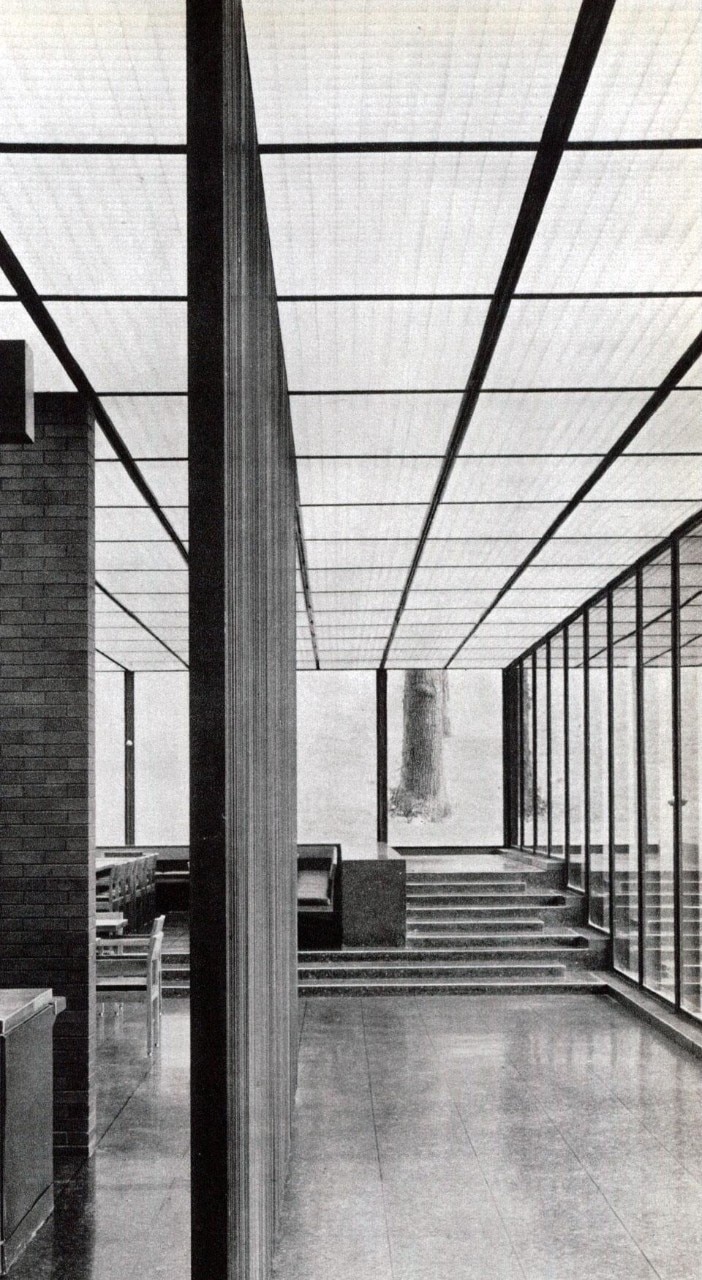
Having selected a site because of the beauty of nature, we were especially anxious to lake full advantage of views from the offices. To avoid curtains or Venetian blinds, which obscure the views, we worked out a system of sun-shading with metal louvers and specified reflective glass to prevent glare... ".
(From several statements by Eero Saarinen, from 1957 to 1961, collected in Eero Saarinen on his work, Yale University Press, New Haven, 1962)
Having decided to use steel we wanted to make a steel building that was really a steel building (most so-called steel buildings seem to me to be more glass buildings than steel buildings, really not one thing or the other)
